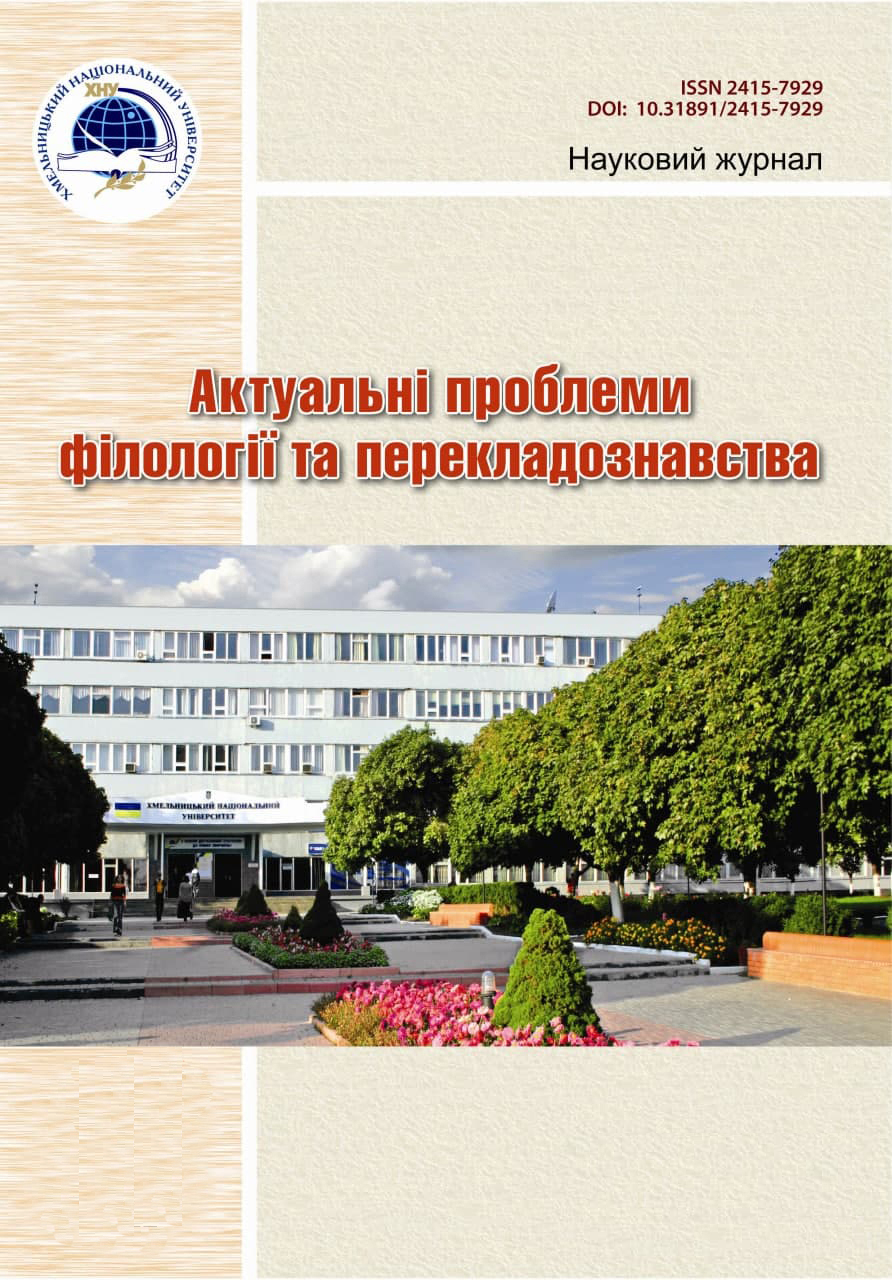LINGUISTILISTIC FEATURES OF THE TEXT IN THE LIGHT OF THE THEORY OF LANGUAGE COMMUNICATION
DOI:
https://doi.org/10.31891/2415-7929-2021-21-44Keywords:
linguistics of the text, artistic text, communicative act, definition of the concept «text», communicative unitAbstract
Rethinking the concept of "text" in recent decades has given impetus to the emergence and not yet complete formation of a complex field of linguistics - text linguistics, whose main task is to identify, systematize and describe the categorical properties of the text, giving it qualitative originality, with their substantive and formal units. organized communicative whole, which has a system of inherent categorical properties. The number of works covering the problems of general text theory is constantly growing, the text and its theory are of great importance in linguistics, which encourages the expansion of a number of questions and increase the discussion. Previously, the text was considered mainly as a kind of background for the analysis of stylistic features of words, phrases, sentences, and the set of texts served primarily as a basis for the selection of functional styles. What is new in the interpretation of the text is that the text is no longer reduced to the concept of background or scope of functioning of various speech units, ie acts as an independent object of linguistic and, in particular, linguistic and stylistic analysis. When studying literary texts, it is impossible to identify and explain a particular stylistic device or only one of its features or functions, it is necessary to consider all works as a whole or individual completed passages so as to cover the ideas, thoughts and feelings expressed in them. A complex content structure requires a complex system of expression and is conveyed not by individual elements, but by their relationship in the message as a whole. Artistic text differs from any other text in that it carries a certain message, idea. With his text the author tries to say something, to convey the idea to the reader. Fiction in general and fiction in particular have a number of functions. The text teaches us something, gives new information, influences emotions, entertains, inspires with new ideas. Knowing this, the writer understands at what levels he will "press" the reader, which in turn will affect the elements that the writer selects for his story, the construction of the text and its linguistic embodiment. This is especially true in relation to the emotional mood of the work of art, because the channel of literature conveys to the reader the driving motives of thought, spiritual needs that guide the activities of the reader.
The article considers the main approaches to the study of the text, the characteristics of the text as a linguistic and stylistic unity, the inclusion of the text in the system of stylistically significant units of other speech levels. The article considers the theoretical provisions that allow to assess the informative and structural characteristics of the text, various aspects of its consideration. Linguistics, like any other science, reflecting a dialectically complex, abrupt way of knowing reality, goes through a number of stages in its development. The specificity of each of them is determined by a set of linguistic problems that arise at a particular stage of primary importance for linguistics as a whole and for its individual areas. Recently, the structural approach to speech phenomena, which focused on the internal organization of units of different speech levels and language in general, has been replaced by a functional approach, which involves studying the speech system in action, the study of the communication process. This reorientation of linguistic disciplines to the study of the functional side of language has led to an increase in various areas of linguistics, expanding their subject and putting forward one of the first issues of the text.
Downloads
Published
Issue
Section
License
Copyright (c) 2021 Л. СОГА (Автор)

This work is licensed under a Creative Commons Attribution 4.0 International License.

